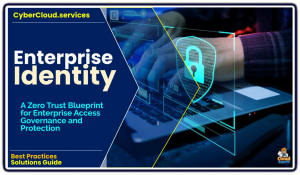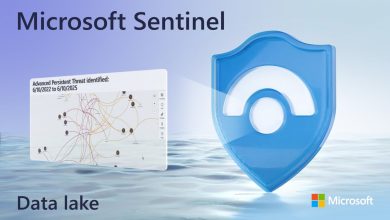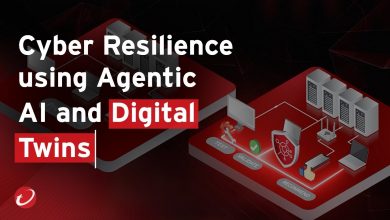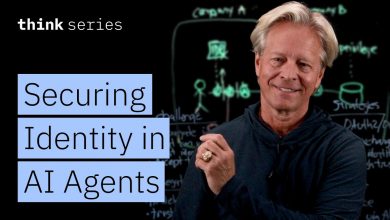Securing the Future with Enterprise Identity: Okta
With the rise of remote work, cloud adoption, and sophisticated identity-based attacks, securing access to systems, applications, and data hinges on robust enterprise identity management.
 In the digital age, where boundaries between organizations and their environments dissolve into the cloud, and workforces span continents and home offices alike, one truth has emerged as the bedrock of cybersecurity: identity is the new perimeter.
In the digital age, where boundaries between organizations and their environments dissolve into the cloud, and workforces span continents and home offices alike, one truth has emerged as the bedrock of cybersecurity: identity is the new perimeter.
No longer can enterprises rely solely on fortified network walls to protect their assets.
With the rise of remote work, cloud adoption, and sophisticated identity-based attacks—where stolen credentials fuel 80% of web application breaches—securing access to systems, applications, and data hinges on robust enterprise identity management.
Enterprise Identity
This series explores the pivotal role of enterprise identity in modern cybersecurity and illuminates how Okta, a leader in identity and access management (IAM), empowers organizations to navigate this complex landscape with confidence.
Enterprise identity is more than a technical construct; it is the foundation upon which trust, security, and efficiency are built. At its core, it ensures that only the right individuals—employees, contractors, partners, or customers—gain access to the right resources at the right time, under the right conditions. This begins with authentication, the process of verifying who a user claims to be.
Multi-factor authentication (MFA), incorporating phishing-resistant methods like biometrics or FIDO authenticators, has become non-negotiable in thwarting credential theft.
Equally critical is authorization, which enforces the principle of least privilege, ensuring users access only what their roles require, minimizing risks from overprovisioned accounts. Together, these mechanisms form the first line of defense in a world where a single compromised identity can unravel an organization’s security.
The dissolution of traditional perimeters has ushered in the era of Zero Trust, a paradigm where no user or device is inherently trusted. Enterprise identity is the linchpin of this approach, demanding continuous verification of identities, devices, and contextual factors—such as location or device health—before granting access.
This best practice series delves into how centralized identity management, through platforms like Okta’s Universal Directory, unifies user identities across cloud, on-premises, and hybrid environments, reducing complexity and enhancing visibility. By automating identity lifecycle management—from onboarding to role changes to deprovisioning—organizations can eliminate risks like orphaned accounts, which hackers exploit, while streamlining operations.
Compliance, too, underscores the importance of enterprise identity. Regulations like GDPR, HIPAA, and PCI DSS demand rigorous access controls and audit trails, which robust identity solutions deliver through role-based access control (RBAC) and detailed logging.
As remote and hybrid work becomes the norm, identity systems must secure mobile access with device certificates and adaptive policies, ensuring flexibility without compromising safety. This book examines how these practices not only protect organizations but also foster trust with customers and regulators in an increasingly scrutinized digital ecosystem.
Okta
At the forefront of this transformation is Okta, whose comprehensive IAM solutions redefine enterprise security. Okta’s Workforce Identity Cloud enables seamless access for employees and partners with features like Single Sign-On (SSO), which reduces password fatigue, and adaptive MFA, which dynamically adjusts security based on risk signals.
Its Universal Directory centralizes identity management, while Lifecycle Management automates access updates, as evidenced by organizations like Wyndham, which slashed development costs by 85% through Okta Workflows. For customer-facing applications, the Customer Identity Cloud balances security with user experience, protecting against fraud while supporting scalability across industries.
Okta’s commitment to innovation shines through its Identity Threat Detection and Response (ITDR) capabilities, leveraging AI to detect anomalies in real-time, and its leadership in standards like the Interoperability Profile for Secure Identity in the Enterprise (IPSIE), developed with the OpenID Foundation.
Despite past challenges, such as the 2023 breach involving stolen credentials, Okta has fortified its infrastructure and transparency, reinforcing its role as a trusted partner. This book highlights how Okta’s solutions—from mobile security to over 8,000 pre-built integrations—empower organizations to secure their digital transformation.
As we embark on this exploration, we invite readers—IT leaders, security professionals, and business executives—to understand how enterprise identity shapes the future of cybersecurity. Through practical insights, case studies, and a deep dive into Okta’s offerings, this book equips you to build a resilient, identity-centric security strategy. In a world where threats evolve daily, mastering enterprise identity is not just a best practice—it is a necessity for securing tomorrow.



